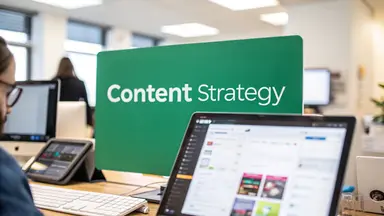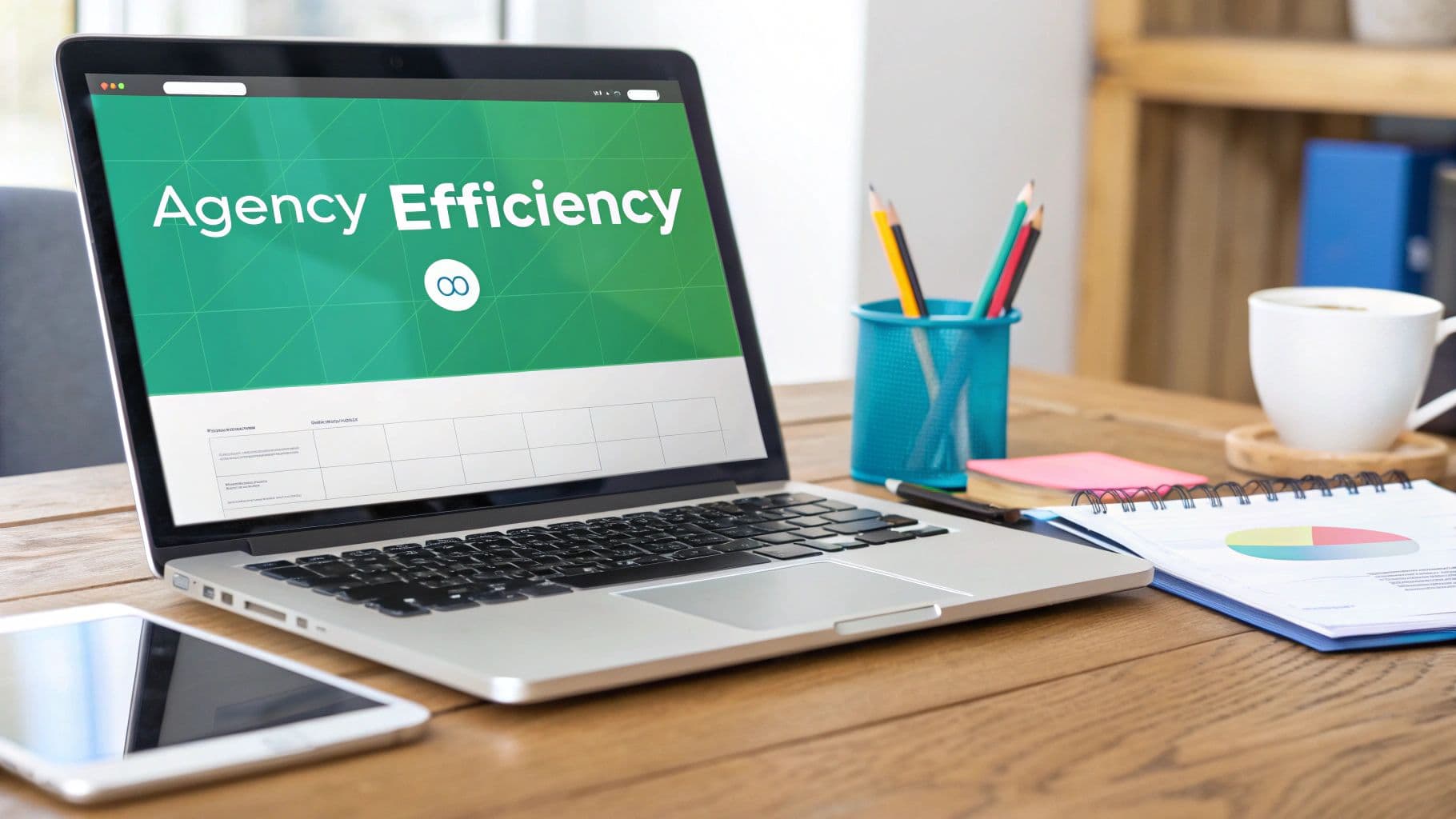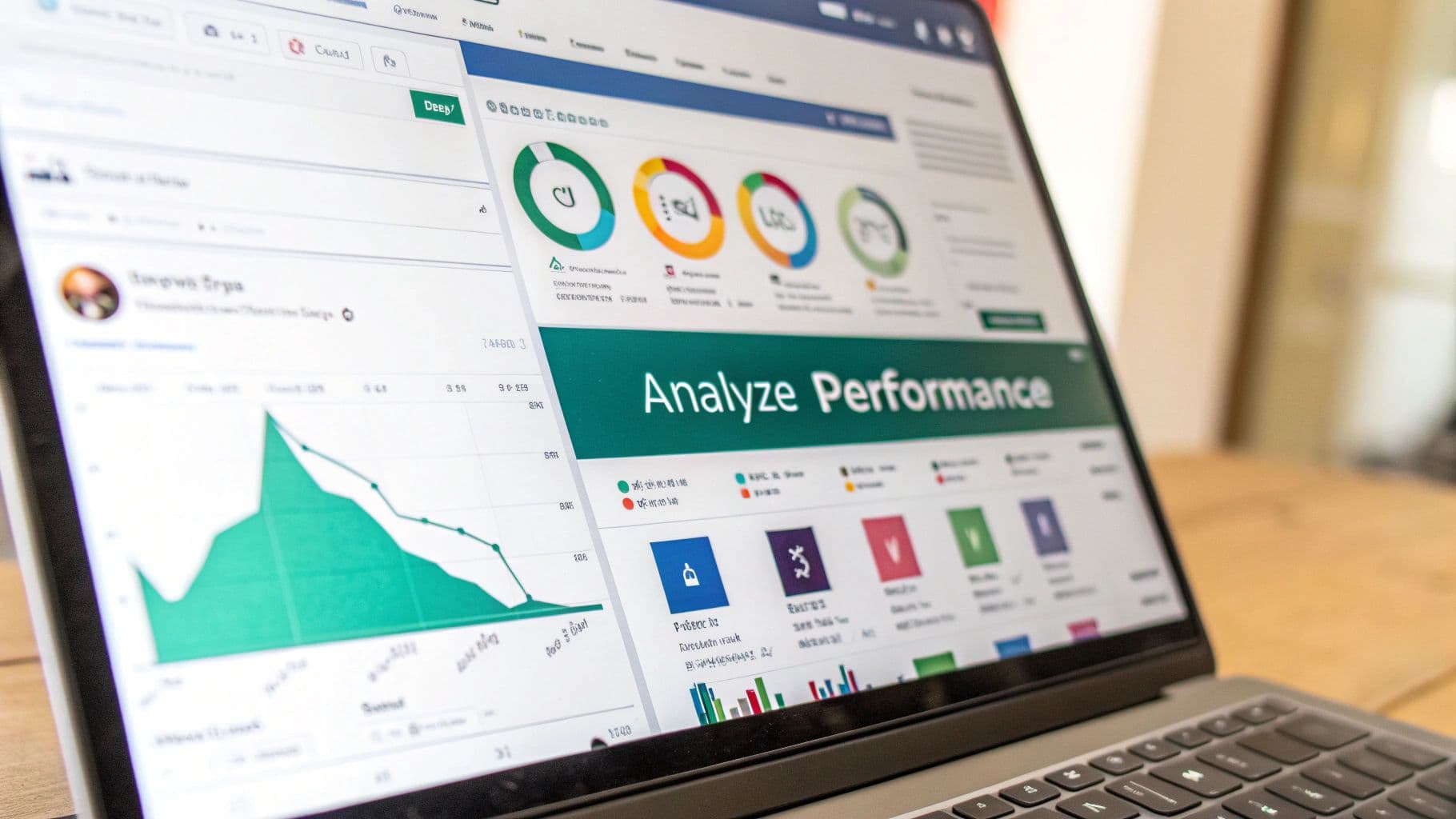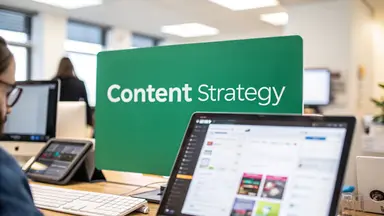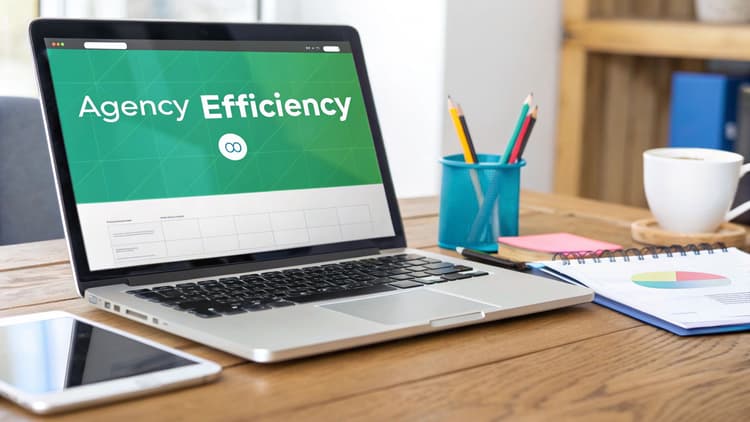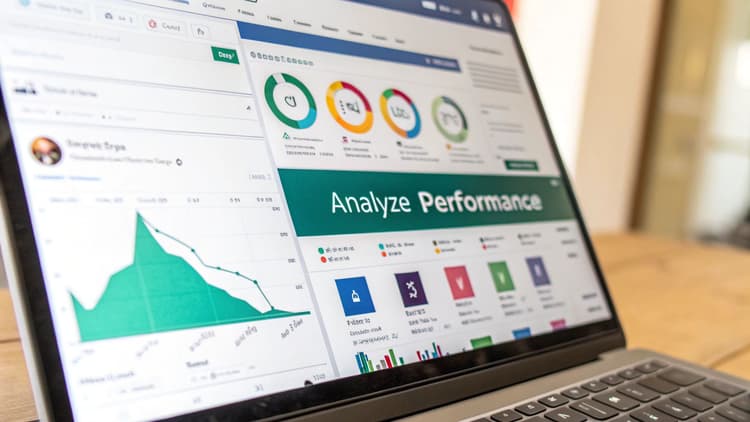Understanding Social Media Competitive Analysis Tools
Key Features of Social Media Competitive Analysis Tools
The most useful competitive analysis tools include several core capabilities:
Competitor Identification: Find and monitor key players in your space, including direct competitors and brands targeting similar audiences
Performance Tracking: Compare key metrics like engagement, follower growth, and content capacity to benchmark your results
Content Analysis: See what content types, topics, and posting schedules push the best results for competitors
Audience Insights: Learn about competitor audience demographics, interests, and interactive patterns to refine your targeting
Reporting and Analytics: Get clear visualizations and actionable reports on competitor strategies and results
For example, Sprout Social lets you track metrics like engagement rates and content performance across platforms. This helps you identify what's working for industry leaders and apply those insights to your strategy.
Choosing the Right Tool for Your Needs
Your choice of competitive analysis tool should match your specific situation. Small businesses often do well with basic tools that cover core monitoring needs while larger companies may need more robust platforms with advanced features.
You might be interested in: Learning more about Gainsty.
Consider which social networks matter most for your business. Some tools focus on specific platforms while others provide cross-platform analysis. If Instagram is your main channel, look for tools with strong Instagram analytics. For multi-platform strategies, choose a tool that can track progress across all your key networks. Evaluating options based on your needs will help you get more value from competitive analysis and stay ahead in your market.
Mastering Real-Time Analytics and Historical Insights
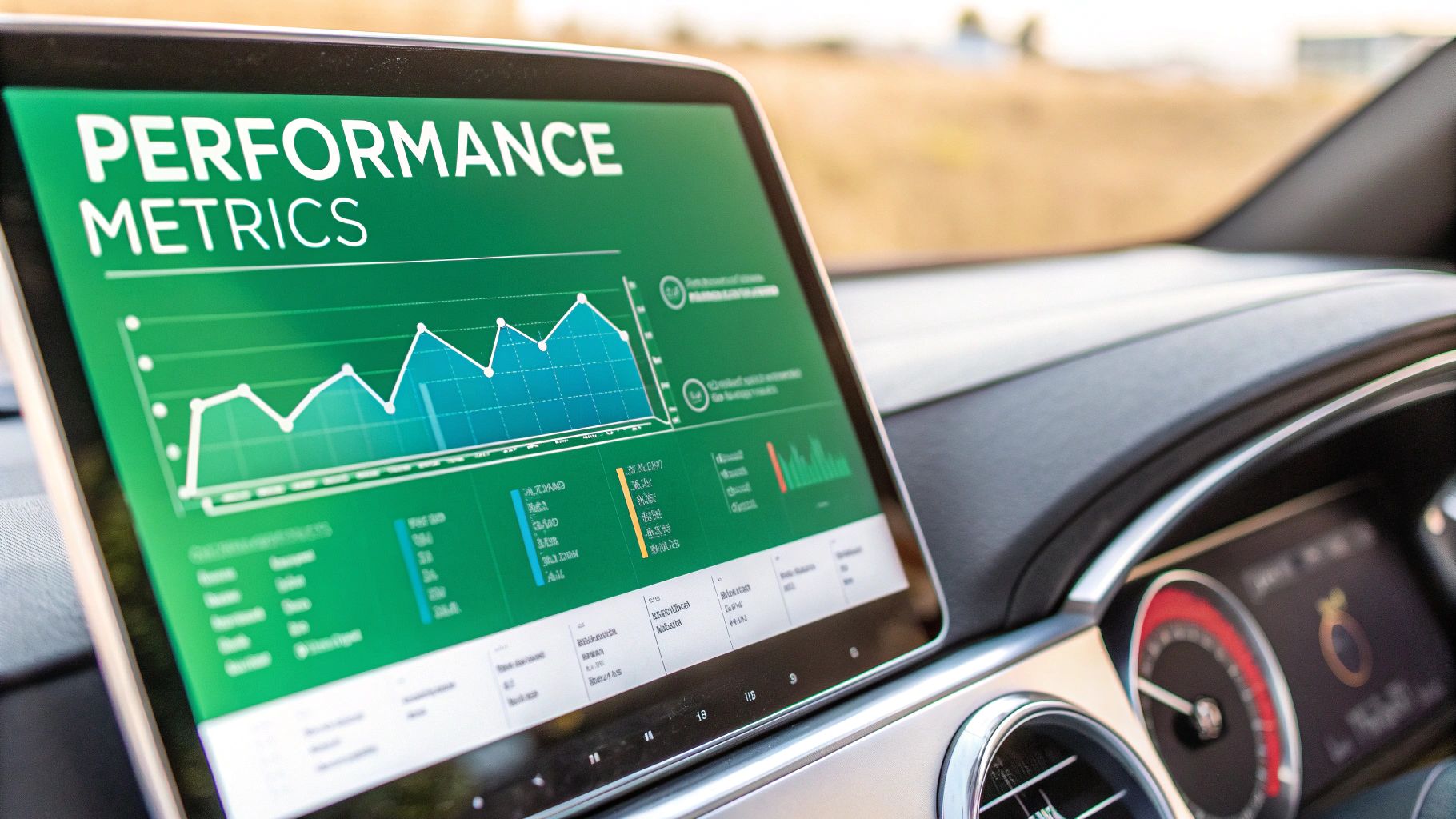
Success on social media requires going beyond basic metrics tracking. Smart brands are now combining real-time data with historical analysis to make better decisions. This approach helps companies respond quickly to current developments while building long-term strategies that work.
The Power of Now: Capitalizing on Real-Time Insights
Real-time analytics shows you what's happening right now in social conversations and trends. For example, when a hashtag relevant to your business starts gaining momentum, analytics tools can notify you immediately. This allows you to create timely content and join discussions while they're active and relevant, helping expand your reach to new audiences.
Learning From the Past: Unearthing Historical Patterns
Looking at past data reveals important patterns in how competitors and audiences behave. By studying which campaigns and content performed well previously, you can understand what connects with your target audience and avoid common mistakes. These insights help shape better content plans and posting schedules for improved results.
Combining Real-Time and Historical Data for a Winning Strategy
The best results come from using both types of data together. Think of real-time analytics as your compass pointing to immediate opportunities, while historical data acts as your map showing the bigger picture. Tools like Social Blade provide detailed statistics on follower growth, engagement rates, and content performance across platforms like YouTube, Instagram, and X (formerly Twitter). This helps companies measure their progress and study competitor strategies. Learn more about social media competitive analysis.
This balanced approach lets businesses act quickly on current trends while staying aligned with their overall social media goals. By analyzing both current and historical competitor data through social media tools, companies can spot meaningful patterns and turn them into practical strategies that drive real engagement and growth.
Advanced Benchmarking That Drives Real Results
The next level after tracking real-time and historical data is advanced benchmarking, which focuses on metrics that directly impact your business success. Simply counting followers isn't enough anymore. You need to understand how you stack up against competitors on the metrics that move the needle for your business.
Identifying Key Competitive Indicators
Smart brands zero in on specific key performance indicators (KPIs) that align with their goals. For example, if you want to boost brand awareness, you might track your share of voice compared to competitors. If sales are your focus, then metrics like conversion rates and click-through rates become your key benchmarks.
Setting Up Meaningful Comparisons
Good benchmarking needs structure. Many brands organize competitors into tiers - direct competitors in one group, aspirational brands in another, and emerging players in a third. This helps you make comparisons that lead to real insights you can act on.
Interpreting Data and Gaining Strategic Advantages
The challenge with social analytics tools is making sense of all the data they provide. Focus on finding trends and patterns rather than getting lost in individual numbers. If you notice a competitor consistently gets better video engagement, that's a clear signal to improve your video content. Tools like Quintly specialize in detailed competitor analysis across platforms, tracking over 500 different metrics. The platform brings together data from multiple sources so you can make smart, evidence-based decisions. It lets you measure your performance against competitors, similar brands, and partners to fine-tune your strategy. Learn more about precise competitor analysis.
Customizing Your Benchmarking Approach
Your benchmarking needs to be flexible and platform-specific. What works on Instagram may not work on LinkedIn. Your competitive landscape might also look different across audience segments. You might be interested in: reading Gainsty reviews. By adapting your approach to each platform and audience, you ensure your competitive analysis directly supports your business goals and helps identify clear areas for improvement.
Converting Competitor Insights Into Content Gold
Data alone from social media tracking tools isn't enough - what matters is turning those insights into content that drives real results. Smart brands are going beyond basic monitoring to spot gaps, get ahead of trends, and create content their audiences love.
Analyzing Competitor Content Exhibition
Finding what works best for your competitors helps shape a winning content strategy of your own. Pay attention to their content mix (video, images, text), which topics get the most engagement, and how often they post. For instance, if their video content consistently outperforms other formats, that's a strong signal to invest more in video yourself. The right monitoring tools let you dig into these performance patterns and adapt the most successful elements for your brand.
Understanding Audience Behavior Patterns
Your competitors' audiences can teach you a lot about what resonates with your target market. Look closely at which posts spark the most interaction - not just likes and comments, but also shares, saves, and click-throughs. These engagement signals show you exactly how people prefer to interact with content. Use these insights to guide your content creation toward topics and formats proven to connect with similar audiences.
Building a Content Calendar Based on Competitive Insights
While a content calendar helps organize your posting schedule, it becomes much more valuable when shaped by competitor analysis. For example, if you notice a competitor gets more engagement with certain types of posts on specific days, use that to inform your timing and topics. The goal isn't to copy them but to learn from what's working. This data-driven approach to planning helps your content reach the right people when they're most likely to engage.
Maintaining Brand Authenticity While Leveraging Competitive Insights
Competitor research provides valuable direction, but staying true to your brand identity is essential. Think of competitive insights as inspiration rather than a strict template. Let the data guide your strategy while ensuring everything you create matches your brand's voice, style, and values. This balanced approach helps you expand your reach and impact while keeping what makes your brand unique. The most successful content validates tactics with authentic brand personality.
Maximizing Impact Across Multiple Platforms

Growing your brand's reach across social media requires a smart approach to competitive analysis. Each platform has its unique dynamics and audience behaviors that need to be understood. Let's explore how successful brands analyze and adapt their strategies across different social channels while maintaining consistency.
Adapting Your Analysis Approach
Different social platforms have distinct characteristics that shape how people engage with content. Instagram is highly visual, while Twitter excels at quick text updates and conversations. LinkedIn serves professional networking, and TikTok focuses on short videos. Simply using the same analysis methods across all platforms won't give you accurate insights.
Take engagement metrics as an example - likes and comments matter more on Instagram, while retweets and replies are key indicators on Twitter. You'll need social media tools that can track the right metrics for each platform. This focused approach helps you truly understand how competitors perform on specific channels.
Identifying Platform-Specific Opportunities
Looking at competitors across platforms often reveals gaps you can fill. For example, if a competitor has strong Instagram content but a minimal Twitter audience, that could be your chance to build an engaged Twitter following through timely posts and active conversations.
You can also spot platform-specific trends and hashtag challenges to join. Being strategic about which trends you participate in helps increase visibility while staying true to your brand voice. The key is finding opportunities that align with your overall message.
Optimizing Your Competitive Analysis Workflow
Managing analysis across multiple platforms requires an efficient process. Social media tools can gather data automatically, giving you more time to plan your strategy. Using dashboards that combine data from different platforms helps you spot patterns quickly.
This organized approach lets you move fast when opportunities arise. For instance, if you notice a competitor's TikTok campaign taking off, you can quickly adapt successful elements for your content. Speed and flexibility are crucial advantages in social media marketing.
Creating a Unified Strategy Across All Channels
While each platform needs its approach, your brand should feel consistent everywhere. This means keeping your core message, visual style, and tone aligned across all channels.
Think of it like a band - each instrument plays differently but works together to create great music. Similarly, your social channels should complement each other while maintaining a clear brand identity. When you balance platform-specific tactics with consistent branding, you can build stronger connections with your audience and achieve better results.
Turning Analysis Into Action: Implementation Strategies

Social media competitive analysis only delivers value when you put the insights into practice. Let's explore practical ways successful brands convert their research findings into results-driven action plans.
Creating Actionable Roadmaps
Start by developing a clear competitive analysis roadmap to guide your implementation efforts. Focus on your 3-5 most significant competitive gaps - for instance, if your competitors get better engagement on video content or post at more optimal times. Break these down into specific action items, like testing new video formats or adjusting your posting schedule.
Set realistic timelines and assign clear responsibilities to team members. Having this structured plan keeps everyone aligned and accountable as you work to improve your competitive position.
Creating Effective Feedback Loops
Success requires consistent monitoring and adjustment. Track key performance indicators like engagement rates, reach, and traffic to measure the impact of your changes. For example, when testing a new video format, analyze if it drives more views, shares, and comments compared to your previous content.
Use this data to refine your approach. If certain tactics aren't delivering results, be ready to pivot quickly. Social media changes fast, so staying flexible is essential. Regular evaluation helps ensure your strategy stays on track. You might be interested in: Checking out our guide on Gainsty pricing.
Maintaining Agility in Your Social Media Approach
The social media space never stands still - competitors change tactics, new platforms emerge, and audience preferences shift. This is why strategic agility matters so much. Make competitive analysis an ongoing process, not a one-time project.
Check your social media tools regularly to spot new competitors and track changes in existing ones' approaches. This continuous monitoring helps you spot emerging opportunities and adapt your strategy proactively. Focus on identifying meaningful trends you can act on.
Building Team Buy-In and Managing Resources
Getting results requires both team alignment and smart resource allocation. Help your team understand how competitive analysis connects to business goals. Provide clear direction on roles and responsibilities, along with the training needed for success.
Focus your resources on high-impact activities. Consider investing in tools that automate data collection so your team can spend more time on strategy and content. When everyone understands their part and has the right resources, you're better positioned to turn competitive insights into real results.
Ready to take your Instagram following to the next level? Gainsty, an AI-powered social assistant, helps you organically grow your followers and engagement. With expert guidance and advanced technology, Gainsty offers a safe, efficient way to boost your Instagram success. Discover how Gainsty can help you achieve your Instagram goals.

